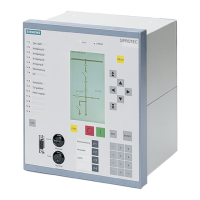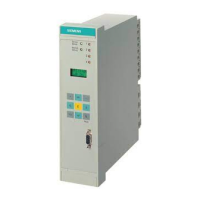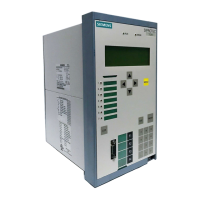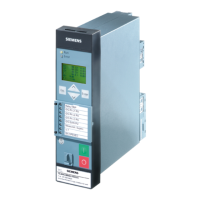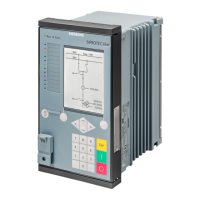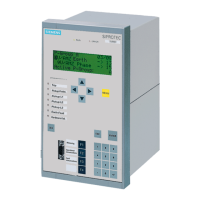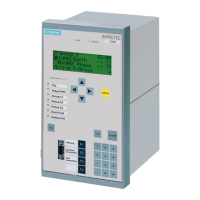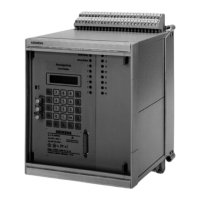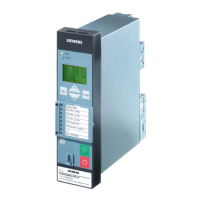Installation and Commissioning
8-257SJ62 Manual
C53000-G1140-C121-1
8.3.5 Testing the Breaker Failure Scheme (if applicable)
Precise timing tests of the breaker failure scheme within the device are better suited
for a lab environment, but on-site functional tests are practical. Current injection from
a test set directly into the 7SJ62 is recommended for these functional tests. The device
must be isolated from the current transformers.
If tripping of circuit breakers and other primary equipment is to be avoided, the trip con-
tacts of the 7SJ62 must be isolated for these tests. This is critical because breaker fail-
ure schemes are designed to trip all surrounding circuit breakers (that allow fault cur-
rent contributions) and possibly transfer trip remote circuit breakers. Failure to proper-
ly isolate the breaker failure tripping can therefore have serious consequences.
Lockout relays (86) are commonly used in breaker failure schemes to provide contact
multiplication and control of circuit breaker close circuits. Typically, all of the 86 con-
tacts must be isolated during testing if circuit breaker operations are to be avoided.
A trip command from the 7SJ62 initiates the breaker failure scheme. If the current in
a phase exceeds the setting under Address %NU&ORVHG,0,1 (typically set
very sensitive), the breaker failure timer under Address TRIP–Timer begins to
run. The timer continues as long as the current element associated with address
is picked up. If the timer expires, a breaker failure condition is detected and immediate
tripping is initiated.
To simulate a breaker failure condition, inject current into the 7SJ62 to trip one of the
protective elements programmed to cause a trip command from the device, and main-
tain the current for a period longer than the breaker failure timer. The current must also
exceed the setting under Address during the entire test. Verify that all device
contacts close that are programmed to trip for a breaker failure condition.
A binary input can be masked with “!%)LQLWLDWHGH[WHUQDOO\” to ini-
tiate the breaker failure scheme. For such schemes, the binary input can be energized
( set for H) or de-energized ( set for L) while current, greater than the setting
under Address , is injected for a time period longer than the breaker failure timer.
A full functional test of the breaker failure scheme, in which all controlled circuit break-
ers are tripped and locked out, is usually only practical when the substation or feeder
is a new installation and not yet energized. After the substation is put in-service, a full
breaker failure functional test is typically not permitted. Therefore, check the tripping
of the scheme to the point that is permitted – usually to (86).
If the breaker failure scheme initiates transfer tripping, then the system’s channel
should be checked.
8.3.6 Testing User-Defined Functions
A 7SJ62 has a vast capability for allowing functions to be defined by the user, espe-
cially with the CFC logic. Any special function or logic added to the device must be
checked.
Naturally, general test procedures cannot be given. Rather, the configuration of these
user-defined functions and the necessary associated conditions must be known and
verified. Of particular importance are the possible interlocking conditions of the circuit
breakers and other primary switching devices. They must be considered and tested.
www . ElectricalPartManuals . com
